- Forum
- Photography and Camera Forum
- Taking the Photo | Editing | The art of Photography!
- Beginner Photography Forum
- Downsides to shooting in Raw?
Downsides to shooting in Raw?
-
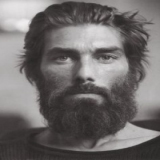 Topic Author
Topic Author
- Randall McNabb
- Lone Wolf
-
- Nikon D7100
- Followers: 80
- Posts: 138
-
Points:
2383
Post #423511
From what I'm seeing, it's just a little performance because the RAW files are larger? So it will use up more of the cameras buffer as it processes. Is that correct?
-

- KCook
- Photo Elder
-
- Canon EOS 50D and Olympus E-P5
- Followers: 1325
- Posts: 5410
-
Points:
32913
Post #423550
Kelly Cook
Post #423580
-

- Hassner
- Super User
-
- Canon 40D 50D 60D 5DII Canon SX60HS
- Followers: 1406
- Posts: 22222
-
Points:
113600
-

- effron
- Newbie
- Followers: 1623
-
Points:
129640
Post #423607
Hassner wrote: Once you have the hang of processing RAW in eg. Photoshop or Lightroom, you will never shoot jpg again, unless you are in a huge hurry and need the shots fast.
Bingo. There are no downsides to raw format. Photoshop comes with ACR, and learning post processing is as important as learning the camera controls. The file sizes are bigger but digital storage is cheap, and getting "more affordable" by the day....
Why so serious?
-

- garyrhook
- Oh Wise One
-
- Nikon D850, Nikon D750, Panasonic G7K
- Followers: 912
- Posts: 11103
-
Points:
67681
Post #423631
Randall McNabb wrote: Good morning. I'm new here. I tried finding an exact answer and did find anything and was wondering for those who have been shooting in JPEG format and want to change to shooting in RAW. What are the downsides to RAW?
From what I'm seeing, it's just a little performance because the RAW files are larger? So it will use up more of the cameras buffer as it processes. Is that correct?
There is no downside, unless you consider having to actually create an image that fulfills your artistic vision, as opposed to letting the camera's software do it, a downside.
You will have to learn to post process your images. It will take time, and work, and patience. But there are infinite possibilities when you start with a lump of clay.
-
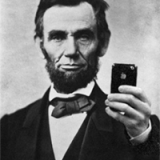
- JD Imagery
- Lone Wolf
-
- Nikon D600 and D800
- Followers: 46
- Posts: 237
-
Points:
861
Post #423704
Hassner wrote: Once you have the hang of processing RAW in eg. Photoshop or Lightroom, you will never shoot jpg again, unless you are in a huge hurry and need the shots fast.
I couldn't agree more. Actually I can't remember the last time I shot in JPG.
-
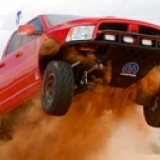
- Scott Klubeck
- The Lounger
- Canon 5D Mark II
- Followers: 389
- Posts: 1467
-
Points:
10008
Post #423977
effron wrote:
Hassner wrote: Once you have the hang of processing RAW in eg. Photoshop or Lightroom, you will never shoot jpg again, unless you are in a huge hurry and need the shots fast.
Bingo. There are no downsides to raw format. Photoshop comes with ACR, and learning post processing is as important as learning the camera controls. The file sizes are bigger but digital storage is cheap, and getting "more affordable" by the day....
+1 Agree
-

- Stealthy Ninja
- Moderator
-
- Fuji X stuff and a 1DsIII for some reason
- Followers: 982
- Posts: 16300
-
Points:
6837
Post #423981
But if that's the case, most of the time I'll just use my phone.
Sports/News photographers might be a different story.
-
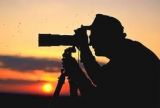
- Cliff
- Snapobsessed
-
- Nikon D300
- Followers: 92
- Posts: 380
-
Points:
2313
-
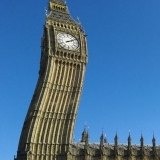
- stutter warrior
- New Kid On The Block
- Followers: 5
- Posts: 33
-
Points:
0
Post #426221
I prefer JPG as I want the photo to look the same as when I took it but then I like my photos to be either over or under exposed and looking a bit different.
-
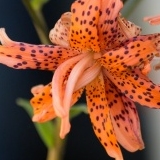 Pt+
Pt+ - stuartsbarbie
- Photography Hooked
-
- Cannon 6d
- Followers: 568
- Posts: 519
-
Points:
2004
Post #426231
-

- Baydream
- Moderator
-
- Canoni/60D/70D/5DmkIII
- Followers: 388
- Posts: 11185
-
Points:
7280
Post #426250
Joves wrote: Why not just shoot in dual format? I shoot in RAW+Jpeg Fine all the time. The camera clears the buffer just fine when doing so. To me it is having the best of both worlds. I tweak the settings in my Picture Controls to pre-process my Jpegs for effect, and sometimes play with my RAW files to see what I can get out of them differently. I have learned what my camera does with the PC settings, and usually only do minor tweaks at times, in photoshop. For processing your RAWs you can use Nikon Transfer as well, though it is really only good for minor work, to get the most out there are other programs for that.
I often use the jpegs to pre-select photo for further processing, then work on the RAW files.
Shoot, learn and share. It will make you a better photographer.
fineartamerica.com/profiles/john-g-schickler.html?tab=artwork
Post #426501
Baydream wrote:
Joves wrote: Why not just shoot in dual format? I shoot in RAW+Jpeg Fine all the time. The camera clears the buffer just fine when doing so. To me it is having the best of both worlds. I tweak the settings in my Picture Controls to pre-process my Jpegs for effect, and sometimes play with my RAW files to see what I can get out of them differently. I have learned what my camera does with the PC settings, and usually only do minor tweaks at times, in photoshop. For processing your RAWs you can use Nikon Transfer as well, though it is really only good for minor work, to get the most out there are other programs for that.
I often use the jpegs to pre-select photo for further processing, then work on the RAW files.
Exactly John. Jpegs just like anything else are just tools that aid you in getting what you want. Also if your Jpeg turns out as you wanted, you can just hit the apply as shot in the RAW processor, and do any minor tweaks to the RAW file. Then you can convert it to any of the larger formats for other purposes. Far too many just blow off using Jpeg in my opinion, and as I have stated I try to get it right when shot, and the Jpeg is the direct result of how I set the camera to get it. I processed the image, but I tried to get the processing done before I shot it.
-
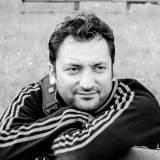
- dragosticu
- Has the Hang of it
-
- Nikon D7000, Nikon D90
- Followers: 13
- Posts: 52
-
Points:
0
Post #427308
Of course if you don't like / don't have time to process the photo, just use JPEG (or JPEG + RAW) until you are ready to shot RAW.
- Forum
- Photography and Camera Forum
- Taking the Photo | Editing | The art of Photography!
- Beginner Photography Forum
- Downsides to shooting in Raw?
Latest Reviews
The Olympus Pen E-P7 is an affordable micro four thirds mirrorless camera with 4K video capabilities, a 20.3MP sensor, and 121 focus points, making it a solid entry-level camera for beginners.
The Panasonic G9 II is a 25.2-megapixel micro four thirds camera with numerous features that make it punch out of its weight class, like 779 AF points, 5.8K video, and weather sealing.
The Fujifilm XT5 is a 40MP mirrorless camera capable of 6.2K video at 30p. With those specs, it’s an ideal choice for photographers needing a camera to pull double duty for imaging and video.
The Canon EOS R100 is an entry-level mirrorless camera introduced in 2023. But just because it’s an entry-level camera doesn’t mean it’s a bare-bones camera. Find out why in this review!
Latest Articles
Upgrade your kit in 2024 with the best intermediate camera on the market! The question is, what camera fits the bill? We’ve got three top options for you to choose from in this buyer’s guide.
The best photography jobs right now are a mix of tried-and-true gigs like wedding photography and new jobs highlighting AI’s capabilities, travel, and videography.
The Olympus Pen E-P7 is an affordable micro four thirds mirrorless camera with 4K video capabilities, a 20.3MP sensor, and 121 focus points, making it a solid entry-level camera for beginners.
Starting a photography business is one thing; sustaining your business over a long period of time is another. Use the tips in this professional photography guide to build something with longevity!
The Panasonic G9 II is a 25.2-megapixel micro four thirds camera with numerous features that make it punch out of its weight class, like 779 AF points, 5.8K video, and weather sealing.
Cinematic photography is an interesting genre that combines photographic and videographic skills along with effective storytelling techniques. The result? Highly impactful images!
Newborn photography requires skill, the right gear, and a lot of patience. This beginner’s guide discusses critical topics that will help you be more prepared for before, during, and after the shoot.
To fill the frame means to expand the footprint of the subject in your shot. Get in close, zoom in, crop the image, or use other techniques to bring the subject to the forefront.




















